Gallery 6: Flight
Artist Interviews
By Taylore Kelly
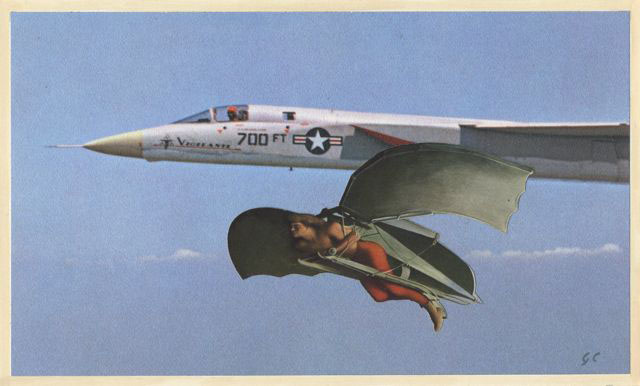 GORDON CARLISLE
GORDON CARLISLE
Q. Your work felt very nostalgic and dream like. The collage and acrylic medium really worked well together to form a united story. Does creating your work come easy to you?
A. I've been making collages since about 1973, the same year I graduated from San Francisco Art Institute. Back then, I was interested in converting these collages into etchings. Soon, I became less and less enchanted with the etching process, and wanted the collages to just exist as themselves.
I've always found the act of creating them very liberating. Initially, I try not to get too much in the way of where they seem to want to go. Then I jump in and help them get there. Creating collages on my own, I don't work with themes. But I've found Tess's (Gallery 6 coordinator) imposing of a theme a worthwhile challenge.
Here, she asked for two or three collages from me. However, the way I work, I like to lay out a couple of dozen at once and see where they take me. Then, it's a process of winnowing out the less effective ones in favor of the better. By the way, I'm often asked if these are made digitally. They're not. I still use old school materials like X-acto blades and spray mount adhesive.
Nearly all my collages include the use of acrylic paint to help blend the collaged elements to each other, so that the scenes become a little more seamless.
The nostalgia comes from my love of older published magazine elements. I collect all these in portfolios marked "Men", "Women," "Women with Appliances," "Animals." etc. Born and raised in the 1950's, these are the type of magazine elements I grew up with as Life, Look and The Saturday Evening Post came to the door. There's a beguiling innocence to the way those magazine models have been posed that speaks of another time. I enjoy juxtaposing this innocence with more contemporary situations.
Does it come easy? Sometimes. It's important to know when to stop. Sometimes there's technical difficulty assembling just a simple collage, what with complex cutting and gluing and pre-planning the sequence of events. And to be honest, after all that, some just don't cut it, and have to be shelved. In the end, I hope to have more successes than failures; at least the 2-3 Tess requested of me.
In my best dreams, I do fly, and it feels as natural as can be, my arms outstretched as I whoosh through rooms in the house, downstairs, out the door and over canyons and river valleys.
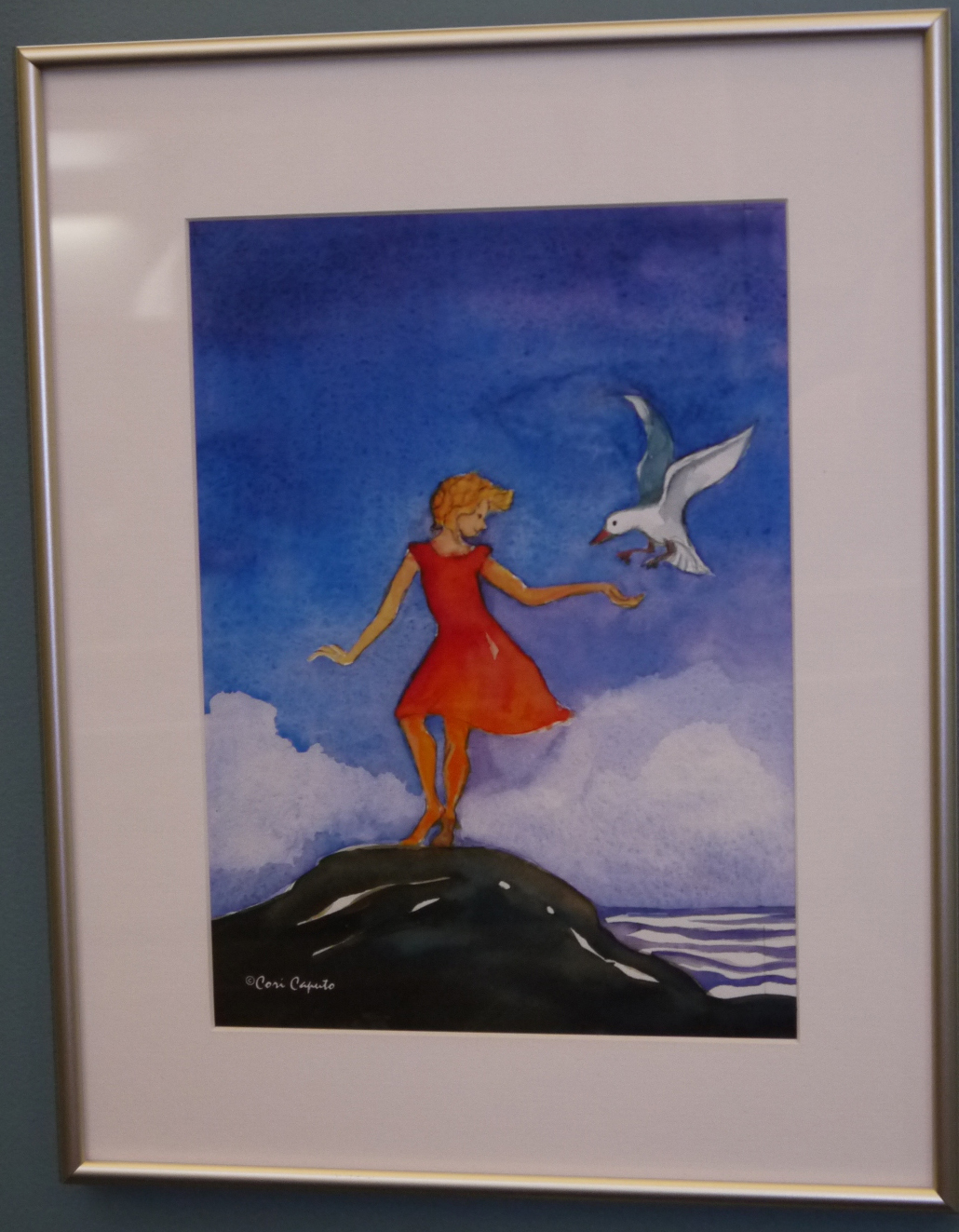 CORI CAPUTO
CORI CAPUTO
Q. Your work really seems to have a playful and dreamlike feeling of calm to it. I, as the viewer wanted to dive in and be a part of what was going on in your pieces. What are you trying to communicate with your art?
A. Because there are a variety of themes in the paintings I have in Flight, I would say their messages range from humor, expressing the simple, sheer joy of weightlessness, adventure, independence, escape, searching for answers or a world-view of a situation. However what I ut on the paper and what the viewer discovers about the art can be two different things depending on their mood when they view the work. It could be deemed as ridiculously silly or it could motivate them to cast off their old life and start fresh. That is the joy of Art, it can be many different things to many people.
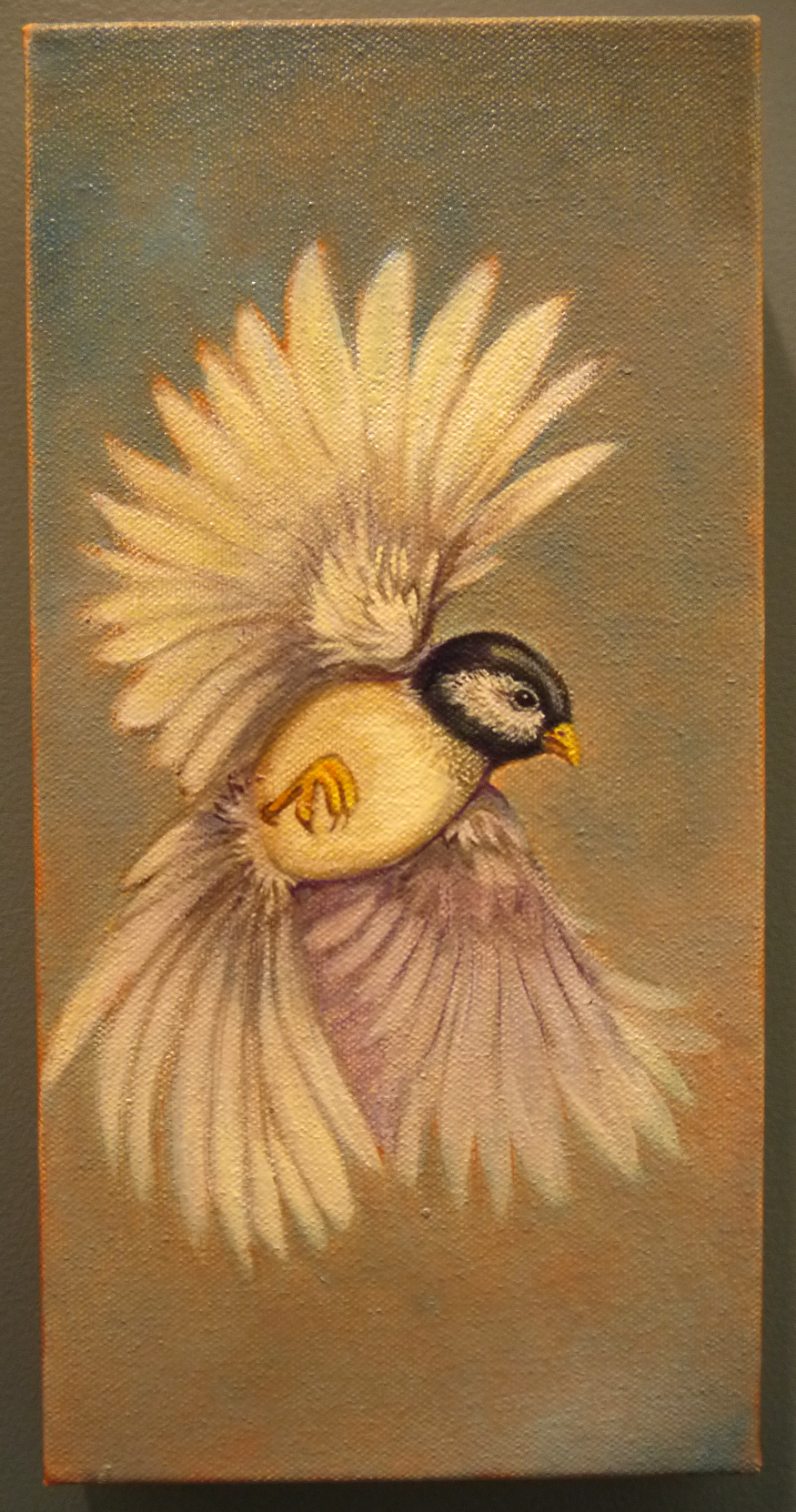 TESS FELTES
TESS FELTES
Q. Each and every one of your pieces truly feels like the subject manner is a living, breathing animal. They are evocative and moving. What is your relationship with animals?
A. As a shy child growing up on a farm in rural Ohio, I can honestly say my first best friends were animals. Countless hours were spent surrounded by nature, observing and forming life-long bonds. I was always drawing in an attempt to capture and respond to the beauty and mystery of the natural world.
It was when I had the opportunity to learn scientific illustration through the Field Museum of Natural History in Chicago that I was finally given the tools to hone my skills and to more accurately portray my subjects.
This has lead to an interesting and gratifying career creating illustrations for journals and books. Lately, however, my goal is to animate my subjects, concentrating on the illusion of movement. It is a privilege to exhibit these attempts at the Children's Museum.
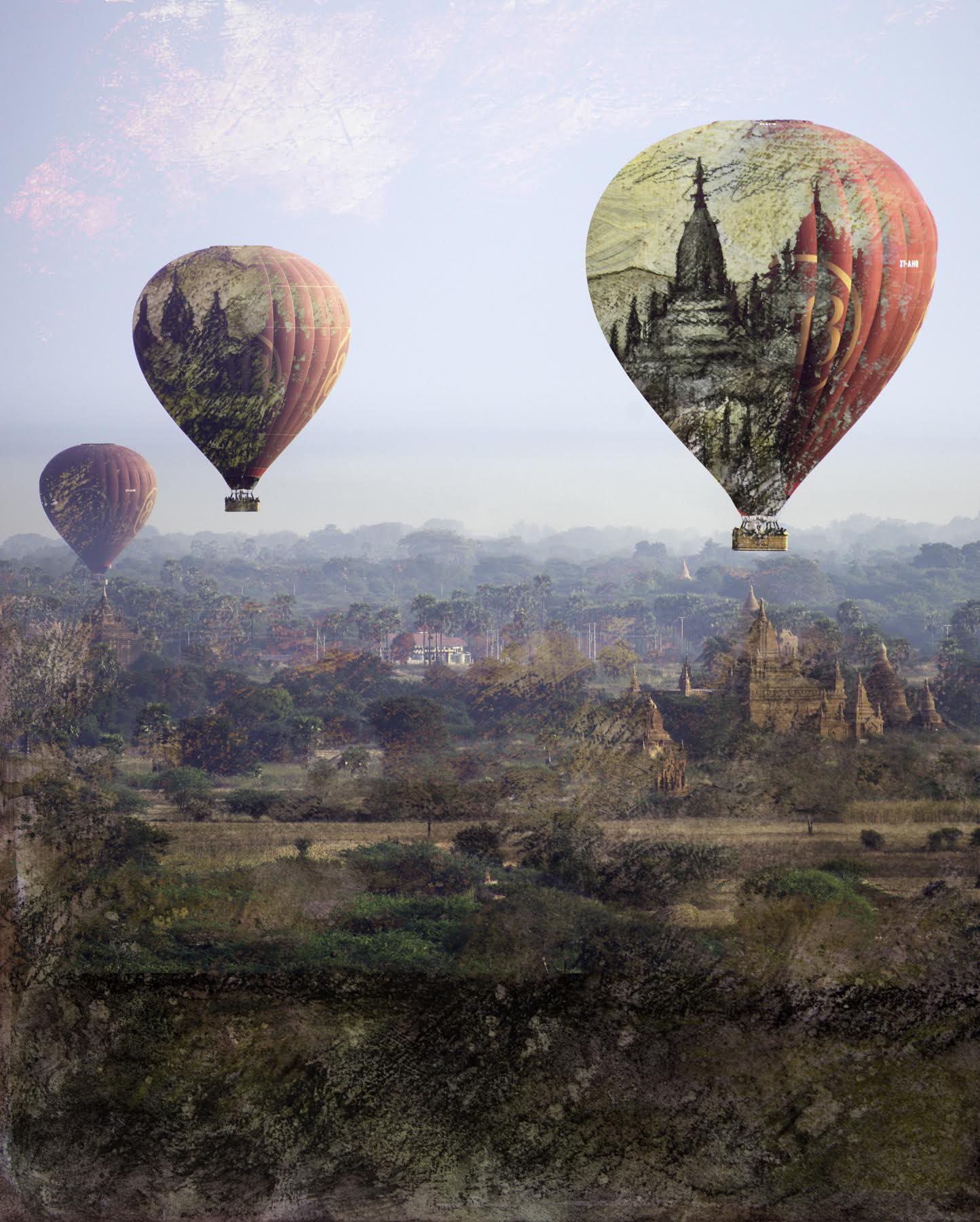 LARRY ELBROCH
LARRY ELBROCH
Q. What better way to see the world than from a hot air balloon? The imagery looks like layers and layers of other images and seems to tell a story. How has your work influenced your life?
A. I have had several careers, but my photographic work has enriched my life for two reasons. First, traveling to countries like, India, Nepal, Tibet, Myanmar and Bhutan has exposed me to various cultures centered on spirituality. These amazing experiences started my creative journey. Second, meeting these people enhanced my understanding of self. We are more the same than different and we should respect these differences.

BARBARA ALBERT
Q. This group of work really draws one’s eye in, with its metallic movement and beautiful composition. Did you choose the subject matter first as flying saucers and then create these pieces? What is your creative process?
A. The holographic movement of my circle paintings when lighted comes from silver acrylic paint applied thickly and scraped thin with a palette knife. I experimented with different size canvases and a variety of contrasting backgrounds to suggest environments for these reflective circles. Both the seemingly three dimensional round shapes and the flickering motion suggested flying saucers to me and I was delighted to show them in CMNH's Gallery 6 exhibit about Flight.
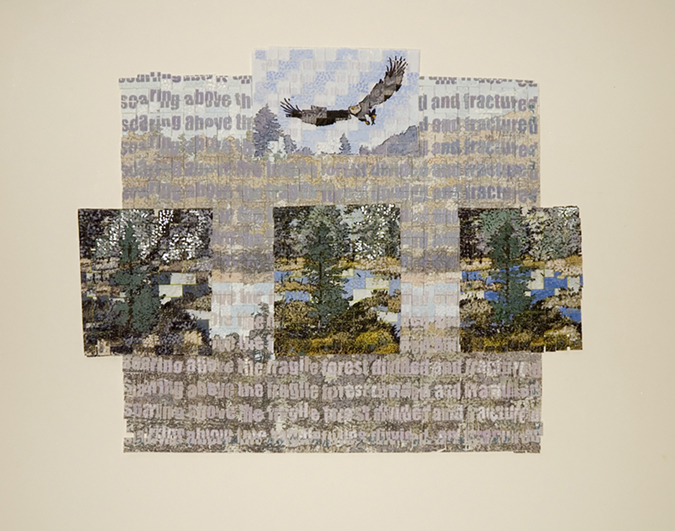 SUE PRETTY
SUE PRETTY
Q. The combination of weaving and painting is such an innovative and beautiful display. This, united with the subject matter was quite breathtaking. How many different mediums do you work in?
A. The piece in the Flight exhibition, Soaring above the Fractured Landscape is a combination of digital images. The photo was manipulated in Photoshop: two variations of the image with a layer of text against the background. The images were then printed, cut apart and re-woven. I then glued these down and highlighted with gouache. I have 2 separate images: the background and the three trees in the foreground and an eagle, each with variations. I like the fact the reassembled image tends to not always perfectly align. This enhances the fracturing of the landscape concept.
My paper weavings are like sketches. Tapestry is a very slow process, which means I can work through images and thoughts with these. The different media feed each other. I think it is important to experiment to open new avenues of exploration. I have done quite a few paper weavings. I work on multiple drawings and paintings before starting a tapestry.
In general I work in tapestry, digital, multimedia, painting, beads, dying, photographs and sculpture. I have worked in oils, encaustic and quilting. I think it is all part of a whole – creative play.
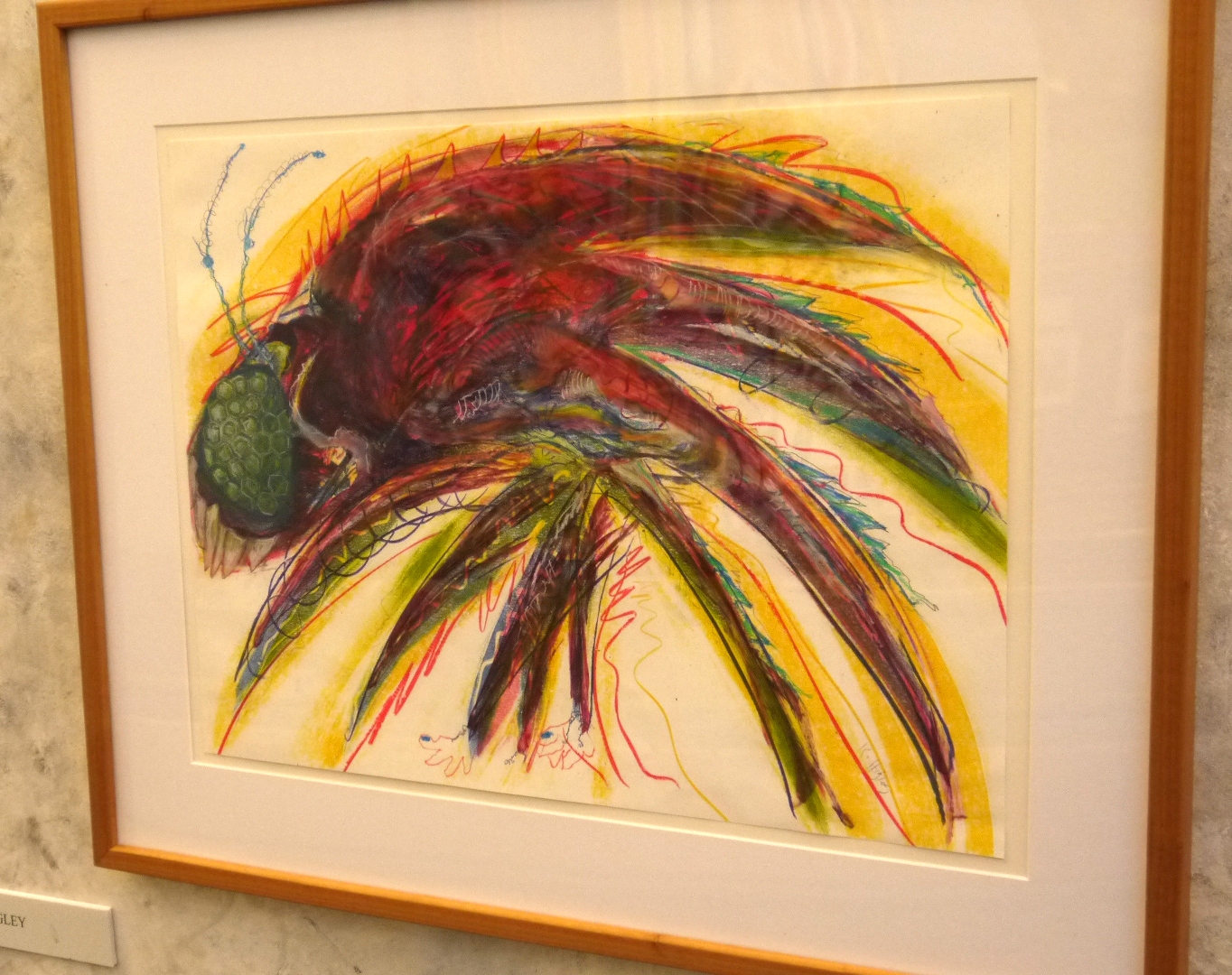 KATE HIGLEY
KATE HIGLEY
Q. The pieces in this show have a lot of energy and seemed to have method of free-rein motion. The imaginary insects have an amazing frenetic energy that resembles real life, this combined with the colors and how the medium was used is quite spirited. Which is more important to you, the subject of your painting, or the way it is executed?
A. The subject of these works was part and parcel of how they were executed. They are actually monotypes, one-of-a-kind prints with the addition of acrylic paint and pastel. I began the print with the teeth several years ago and had it stored in a flat file. Every few months I would take a look at it and wonder what to do next. When the theme of the exhibition was announced, I knew it was time to finish the work. The initial energy was still there and I began to make silly details like the teeth, the feet and colored toenails. When it was completed, I knew I needed a companion. Initially, I began with something quite different, but when it was well started, I knew it was too static. I started over and copied the basic body shape of the first insect but with more vibrant colors. The proboscis was the final bit because I wanted a conversation between these two critters and it certainly seemed that he might not be able to fly with that appendage. So, the subject informs the execution. I love insects and in the past have done some highly realistic drawings of insects while viewing them through a microscope. A field zoology class in graduate school at Wesleyan introduced me to insects and the myriad ways they are assembled. These two pieces are purely imaginative, while knowing that insects often have "hairy" bodies and appendages like a proboscis. They certainly don't have toenails.
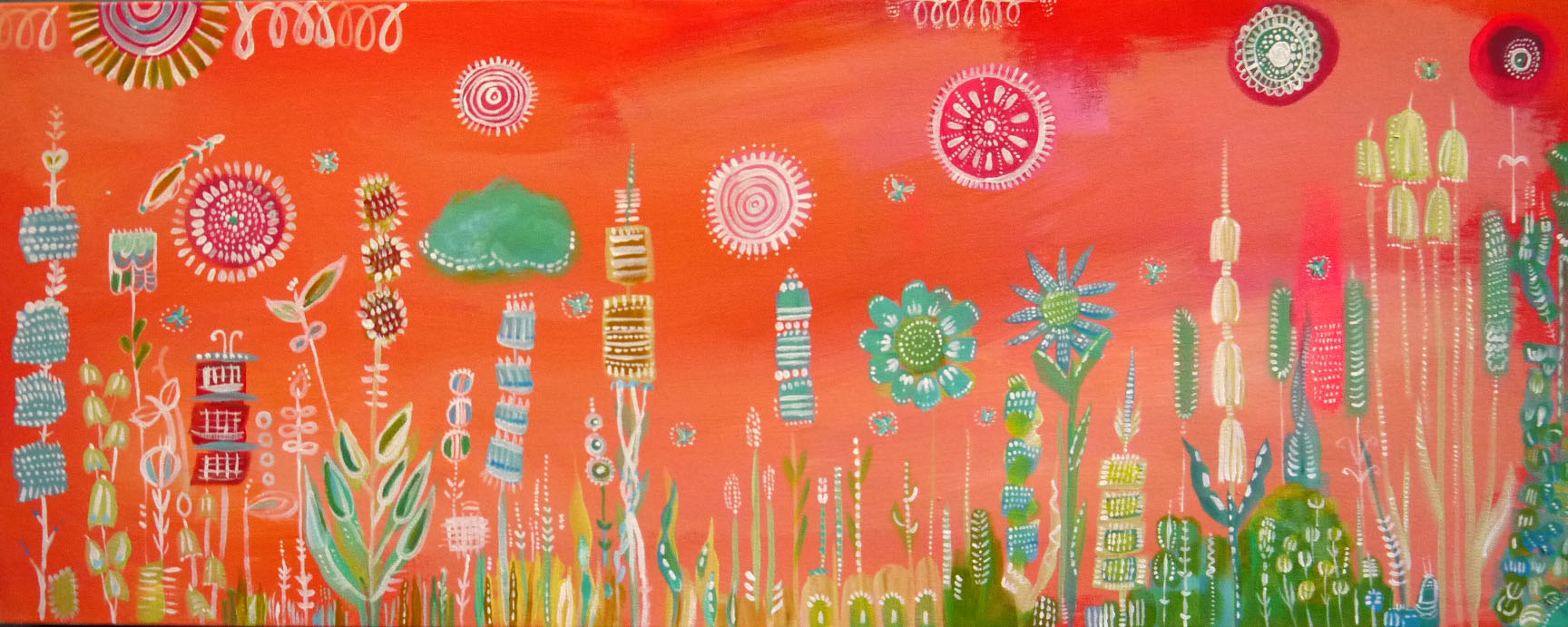
SUSAN SCHWAKE
Q. The pieces in Flight seem to almost tell a story. They also remind me of what music would look like if it were painted: a beautiful collaboration of birds, insects and flowers. Who and what are your influences?
A. My three paintings in the exhibit were painted in late winter when my thoughts turn to summer. They came on the heels of a February/March visit to my husband's parent’s home in Germany where spring comes at that time. They live in a tiny village surrounded by farm and woodlands and we do a lot of biking around the woods. My love of everything nature and working with children are my greatest influences. Nature never disappoints me and the freedom children have with art inspires me.
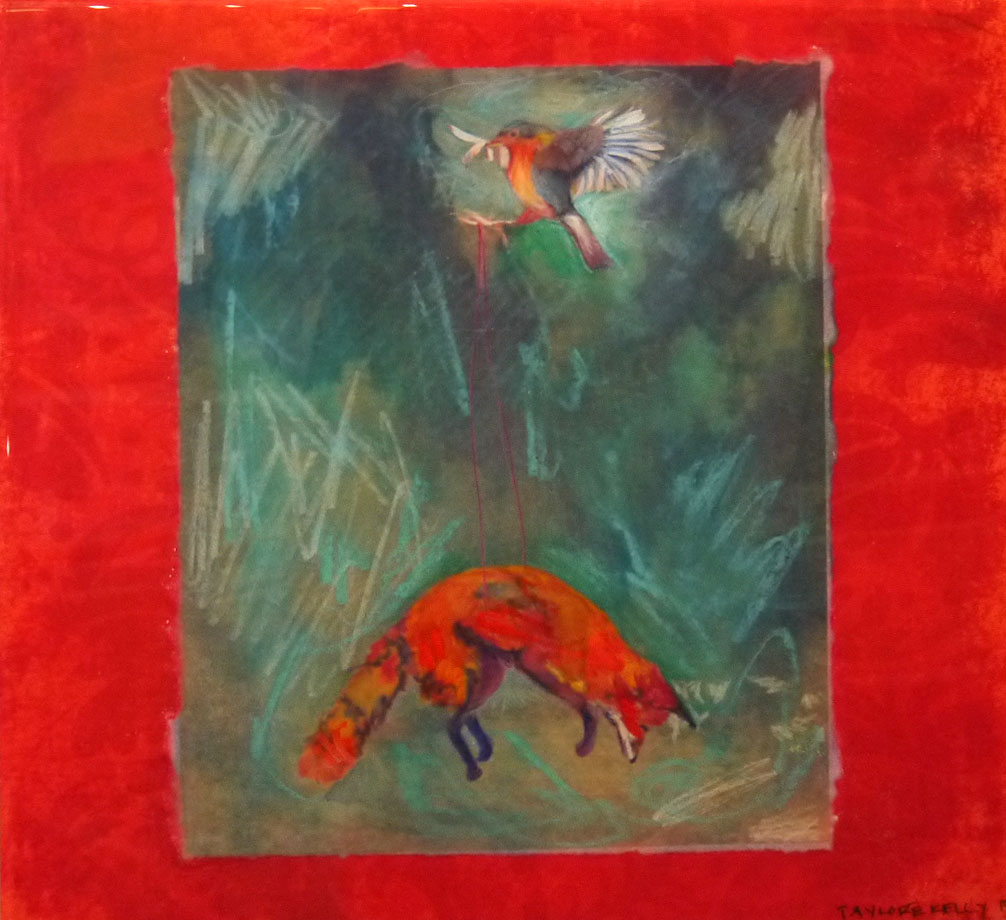 TAYLORE KELLY
TAYLORE KELLY
Q. Your pieces, as well as the titles, are very poetic and dream-like. Did you create the two pieces specifically around the theme of Flight, and do you name your pieces before or after they¹ve been created?
A. Any gallery exhibition I am asked to be in I always create the work specifically for that individual show. I never use pre-existing work. I feel like I am cheating if I do that and am selling myself and the "soon to be born" work short. There is a lot of art wanting to be born and waiting to be created. That's why I am an artist, so any opportunity I have, I cowgirl up and create. It's an amazing way to be and I am quite fortunate to be attuned and wired this way. It's the same with commissions. I would never give someone something I had already done, I want my work to feel special and the person who has it to know it was specifically made for them, or the show. It feels important and vital to constantly make new art and not just back log and recycle my work and I am lucky and fortunate enough that most of my work is bought and goes to new homes. That's the point.
As for naming of pieces, I wait until I am done with the piece and ask it what it's name is. I sit down quietly with the piece and just start writing the words I see in my mind, after asking, and thus the title. It's really like creating beings for me. I don't know how to do it any other way. It's like giving life and with that comes responsibility and care. When it comes down to it, I just care a lot. I want that to show in everything I do, including my art.
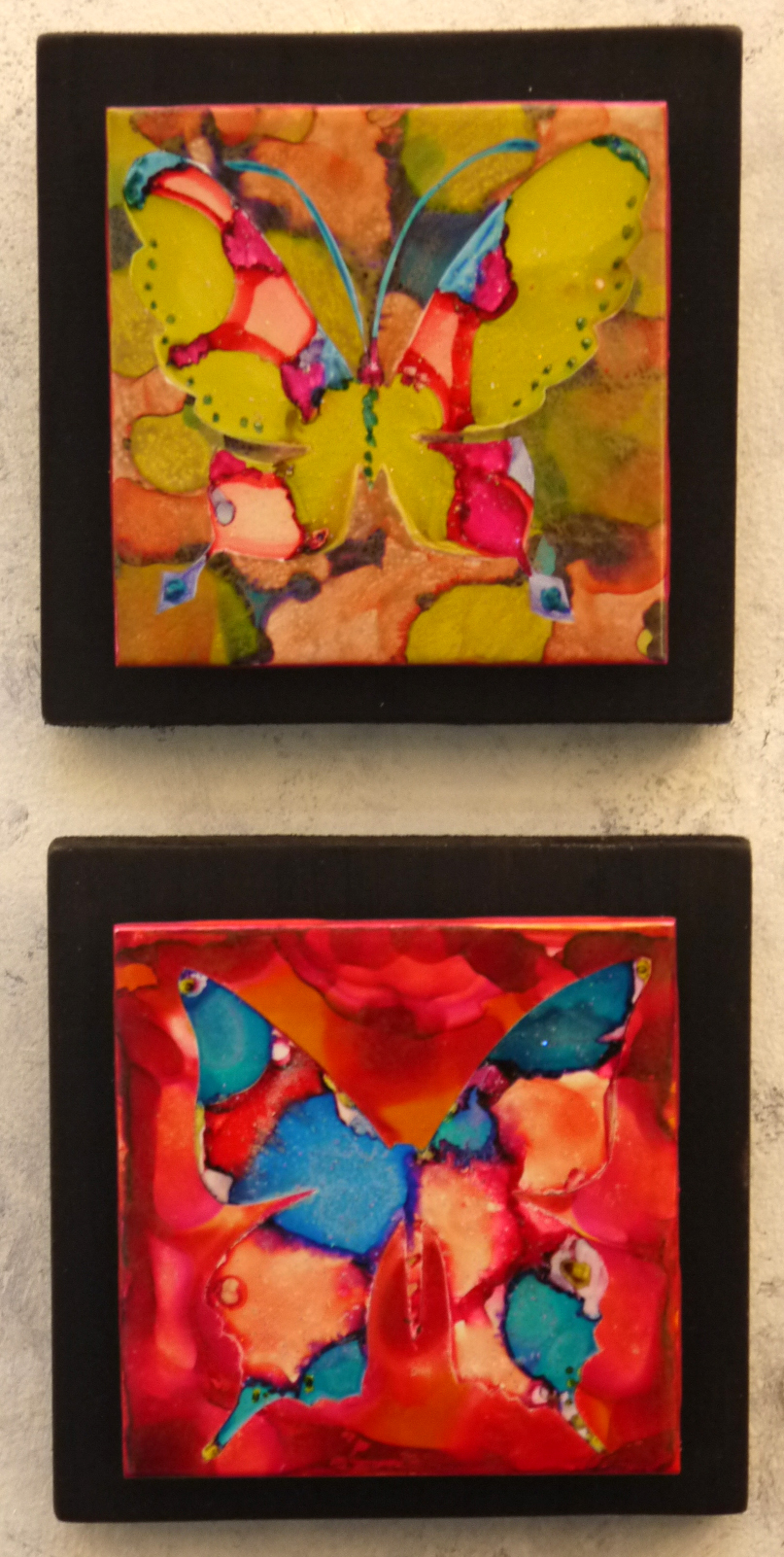 NEVA COLE
NEVA COLE
Q. The natural world imagery is peppered throughout your work, and is quite eye-catching in its jeweled, vibrant colors and almost musical feel. Like one can "feel" your work, sometimes musically, sometimes with it's breathing….What kind of creative patterns, routines or rituals do you have when creating?
A. I work in a lot of different mediums and each medium seems to have it’s own routines. For the tile/alcohol ink pieces (the butterflies and birds), that series started with a lot of free experimentation with a fun new media. I stumbled upon a reference to alcohol inks online and after purchasing some, just played with it for about a year, off and on. I tried it on glass votives, textured tile, old porcelain plates from Goodwill, and then finally on the bright white bathroom tiles. Initially I wasn’t trying to make any kind of recognizable shapes. I just liked the way the paint interacted with itself. There weren't any patterns, which I love. I like the randomness. But inevitably, after the chaotic randomness is created, whether it’s with the alcohol inks or with the painted paper I use to make my paper collages, I always end up going back to very ordered and precise work to tie it together. For instance, with the tile pieces, I end up taking things a step further and adding and subtracting the ink until I’m left with some kind of animal form, be it butterfly, bird, octopus, etc. With the paper collage, I use a very precise routine involving tracing paper, exacto knives and ink. I actually enjoy using ink on the very edges of the paper to create the illusion that the piece is a painting or drawing, and not a collage of many hundreds of pieces of paper. For me, the combination of chaos or experimentation and precision and detail is really satisfying.
